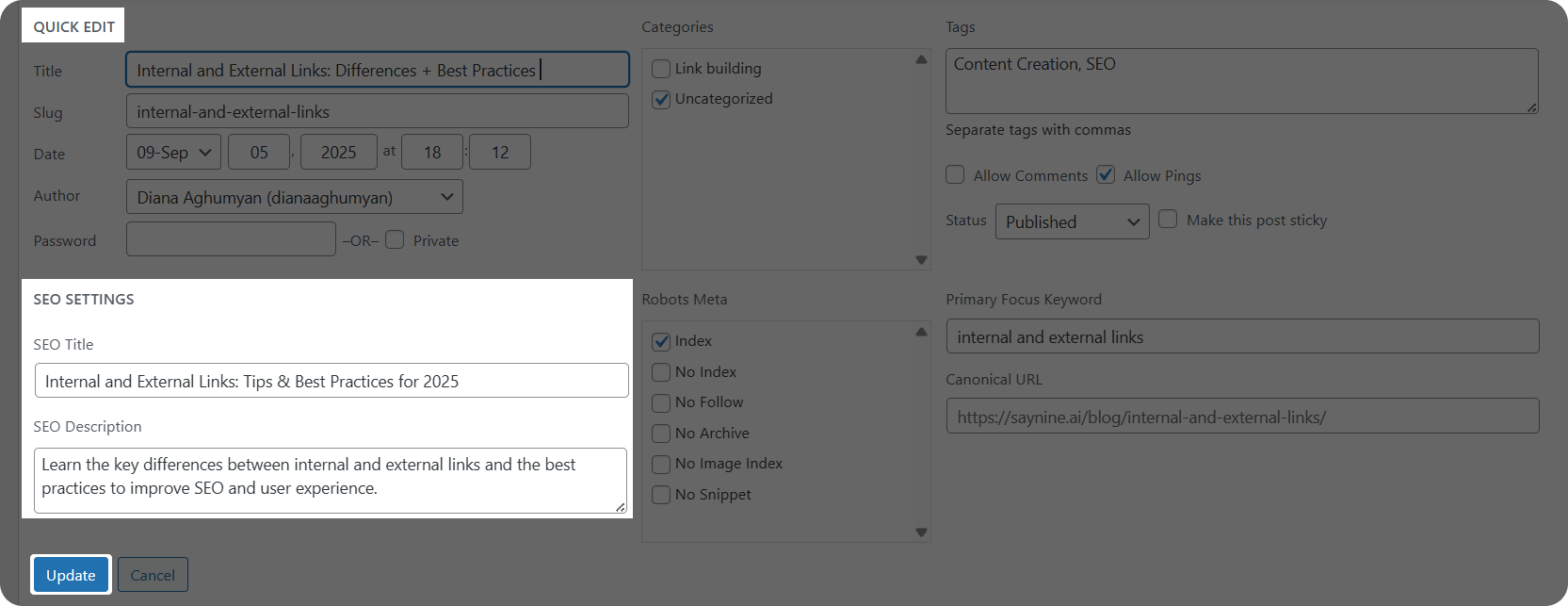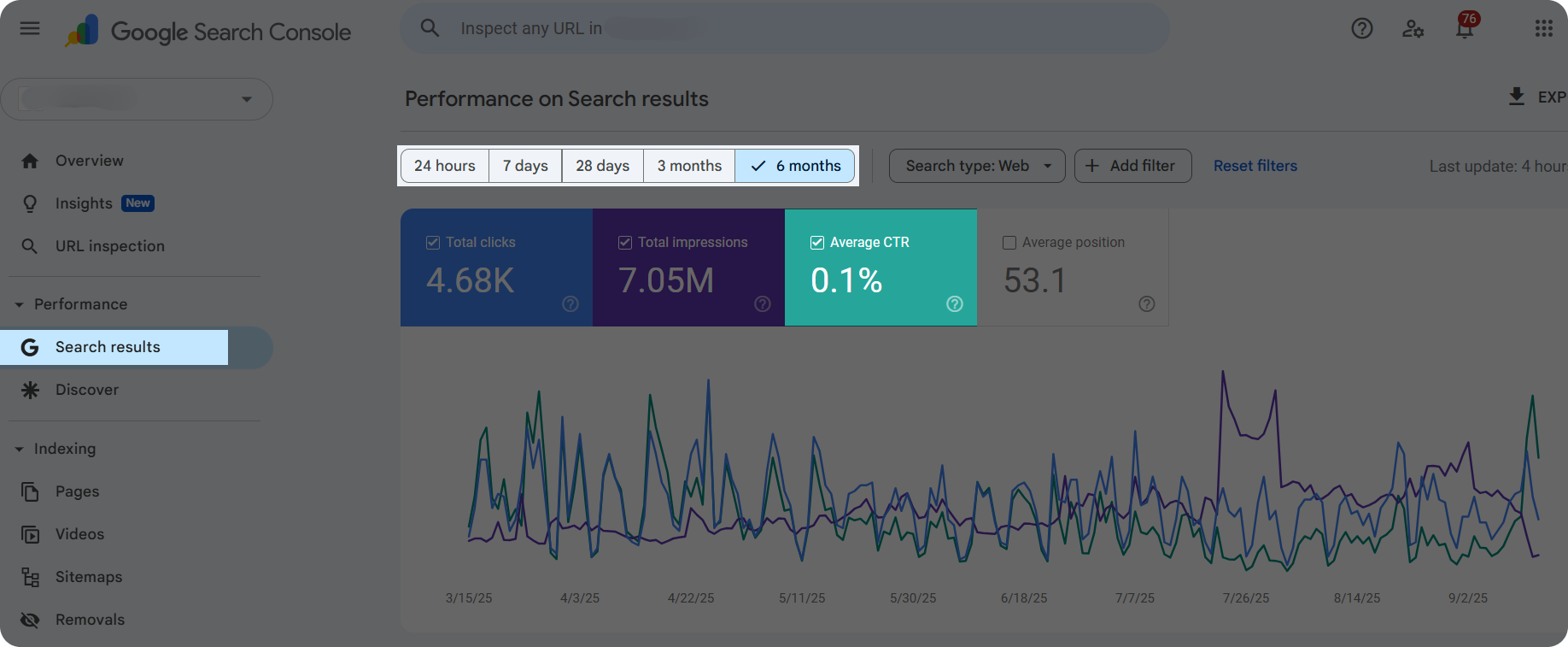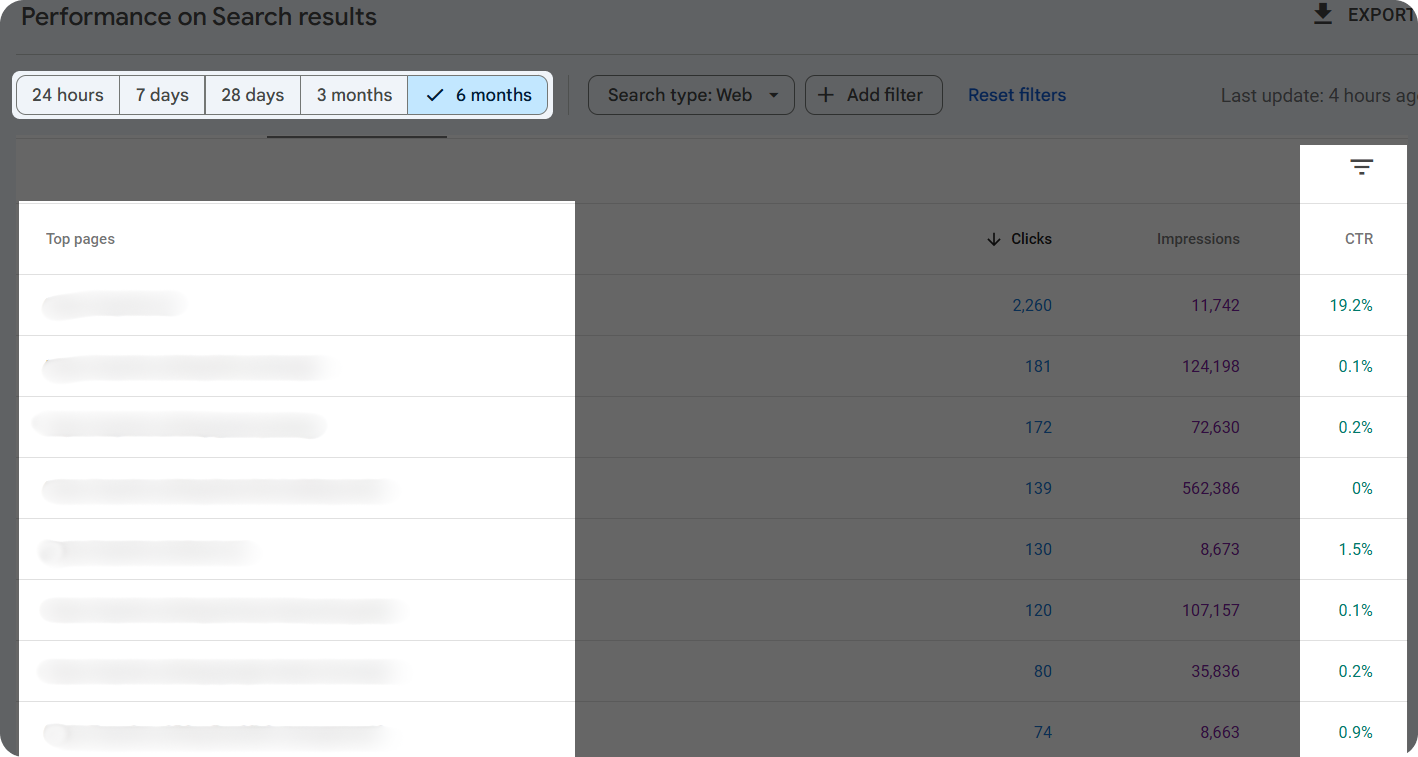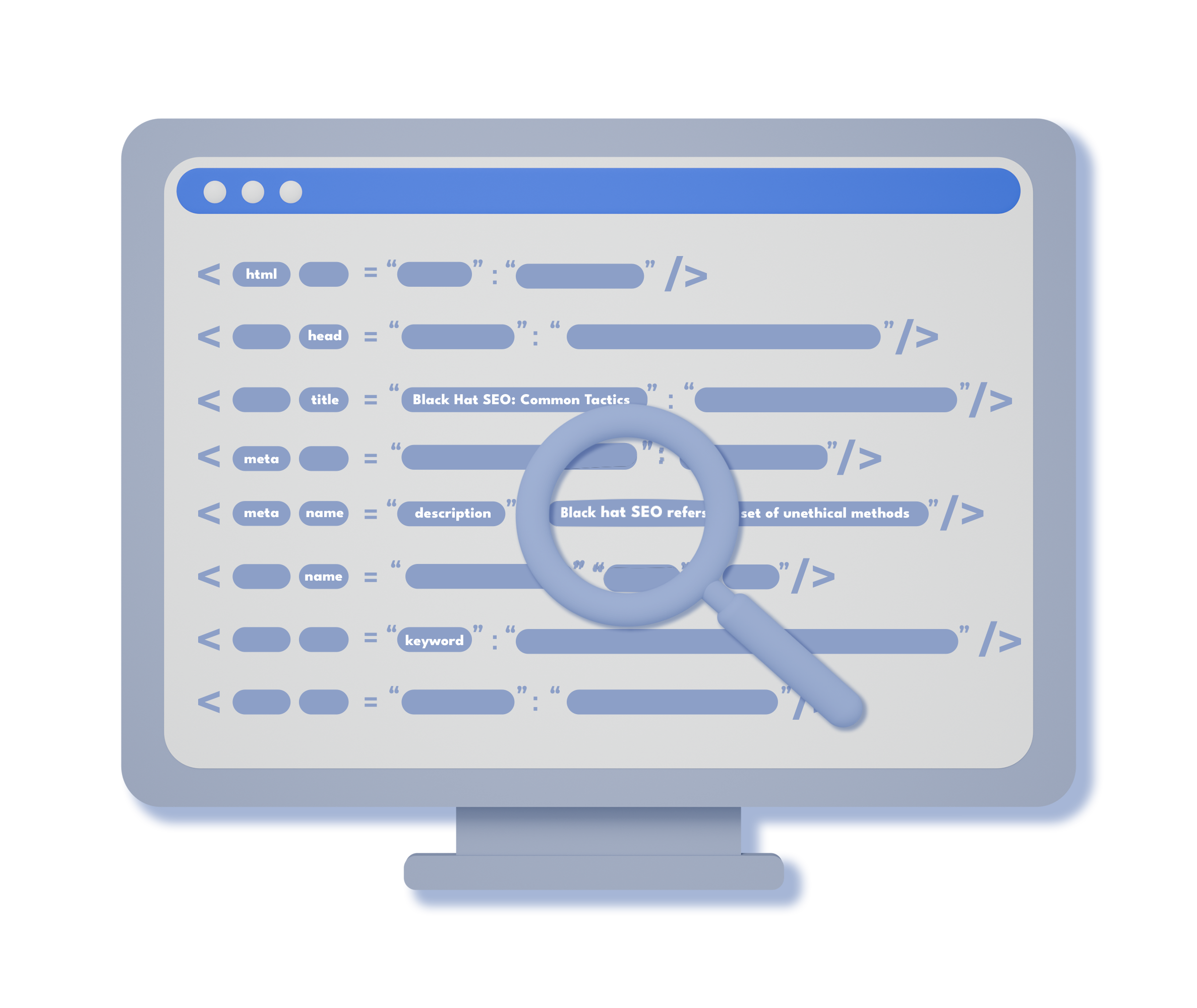Ever scroll through Google results and click on some links while ignoring others? Chances are, the ones that grabbed your attention had compelling titles and descriptions.
These are meta tags, snippets of code that give users and search engines a sneak peek into what your page is about and a quick preview before clicking on it.
In this guide, we’ll break down how meta tags work, why they matter, and how to write them so your pages actually get noticed.
What Are Meta Tags?
Meta tags are parts of the HTML code that briefly describe the content of web pages. For most websites, this consists of the meta title and meta description.
Whenever you search for something on Google, you can immediately see the meta tags for every result. The first thing that catches the eye is the meta title, the heading of the page written in bold. Under the title comes the meta description, which briefly describes the content of the page.

Google reads our pages both through page content and pieces of code like meta tags. They can guide Google to know what these pages are about. Adding meta tags doesn’t guarantee that your pages will automatically rank, but it makes them eligible for ranking. Therefore, relevant and accurate descriptions are one of the small but significant parts of SEO that come with a bunch of benefits.
Here’s what Google says.
Benefits of Meta Tags for SEO
Boosts CTR
Meta titles that include emotional triggers and power words are more likely to get clicks. They introduce your page and call the readers to click. Titles that pop will get more CTRs and bring more organic traffic and visibility to your website.
Additionally, eye-catching headlines help your page stand out in crowded search results, attracting attention before users even read the description.
Enhances User Experience
When users look up something on the internet via search engines, the titles should be the first thing guiding them toward the content of the page. If it matches the promised content, the readers are going to stay, read the content, and say, “This is what I was looking for”. Otherwise, misleading titles will leave them unsatisfied, resulting in a high bounce rate.
Gives More Chances to Rank
While meta tags alone won’t guarantee top rankings, they will help search engines understand your content better and match it with the right search intents. Clear, relevant meta tags can improve click-through rates and engagement, signaling to search engines that your page is valuable, which can influence your rankings over time.
Meta tags are not just technical elements, but powerful details that can help your content become more visible. When composed correctly, it can serve as an invitation for users to click.
Expert Tips on How to Improve Your Meta Tags
Keep Meta Tags Within the Limit
Google has character limits on meta tags and descriptions. Meta tags should be kept in the range of 50-60 characters, and 150-160 characters for descriptions.
In case you exceed this range, Google will cut the rest of the characters, making it less understandable for readers and impacting your user experience.
In the screenshot below, you can see that the long meta title didn’t fit on the screen, and Google had to cut the rest of the heading and description.

Additionally, in case you miss adding the meta description, Google will take a piece of information from your page and show it in search results as your description, which might not entirely reflect your content.
Include the Focus Keyword
We recommend including your primary keyword in both the title and description to align with user intent. At Saynine, we usually add the focus keyword at the beginning of the meta title and description to make it pop instantly.
For example, in this blog post, we have made it “How to Write Meta Tags: Expert Tips and Best Practices”. The users will most likely click on the title that contains the keyword that they searched for.
Avoid Misleading Titles
Your titles should always match the actual context of your pages. Never compose titles for the sake of clicks, as these will frustrate your readers and make them leave your page instantly. When your title doesn’t show the promised content, this not only will hurt your user experience, but also decrease your credibility.
For example, if you mention paid link-building tools in your article, but your meta title is “The Best Free Link-Building Tools”, users looking for the free tools are going to be left frustrated.
Make Your Meta Tags Catchy
In most cases, a catchy title guarantees a higher CTR for your web pages. When users look for something via organic search, the first thing they pay attention to is the title. So your meta tags should reflect what your content is about and, at the same time, be engaging enough to trigger a click.
We recommend adding power words, numbers, or emotional words to make your titles clickworthy. Some of the power words that we use are “best, top, proven, trusted, expert, reliable, etc”.
Keep Your Meta Tags Up to Date
Many editors miss this small yet important part when doing a content refresh. For example, when your article discusses SEO trends in 2024 and you need to update it for 2025, make sure the year is also updated in the metadata.
Forgetting this creates a mismatch between your content and meta tags, which confuses readers and reduces visibility in search results.
With polished metadata in place, you can add them to your pages and enjoy the best results.
How to Add Meta Tags in WordPress
Now, when you have composed your catchy meta tags, it’s time to add them to your pages. This is usually either done manually by adding them to the HTML code or through the CMS admin dashboard. We use WordPress’s admin panel to quickly add or edit our meta tags.
- Go to WordPress and Select “Posts,”
- Click on “Add post” and upload your new content,
- Go to the “Rank Math” plugin on the right tab and click on “Edit Snippet,”
- Add your SEO title and description, maintaining the character count.

The colored bar visually shows your allowed character and recommends not exceeding the green.
If you want to edit the metatags on your existing post:
- Go to “All posts,”
- Click on “Quick edit” on your desired post,
- Edit the SEO title and description and click “Update.”

Are Your Meta Tags Working? Here’s How to Find Out
One of the best ways to see how effective your meta tags are is to check your click-through rate (CTR). This shows the percentage of users who clicked your page from Google’s search results. This metric reflects how compelling your title and description are.
You can check the CTR rate on Google Search Console (GSC). Follow these steps.
- Go to Google Console and click on “Search Results”
- Choose your desired custom date range. In the graphs, you can see the “Average CTR.”
- To see the CTR for each page, scroll down in “Search results” to the list of your pages with their CTR percentages.


If your CTR is high, that’s a good sign your meta tags are doing their job. If it’s low, optimizing your titles and descriptions can make a big difference, even though other factors also affect clicks.
Closing Thoughts
Now you know that meta tags are your website’s first impression in search results, which decides if you get a click or not. Even though they are a small piece of your overall SEO, they carry a huge impact. Well-written titles and descriptions enhance your user experience, give your site credibility, and provide a chance to rank.
Keep them relevant, catchy, and updated as your content evolves, with a bit of power words to make them pop. With the right wording, your meta tags will give your pages the attention they deserve.
FAQ about meta tags
Are metatags still useful?
Yes, metatags are still useful. While some, like meta keywords, are mostly ignored, meta titles and descriptions continue to play an important role for search engines like Google.
What is metadata in SEO?
In SEO, metadata is short, descriptive text, like a meta title or meta description, in a page’s HTML code to help search engines understand and display its content in search results.
How to write a good meta tag?
Keep your meta tags within the character limit, make them catchy, keep them simple, and avoid clickbait.

Quiz Time
Let's put your knowledge to the test.
Leave your email below to get a SayNine certificate!
Are you sure?



